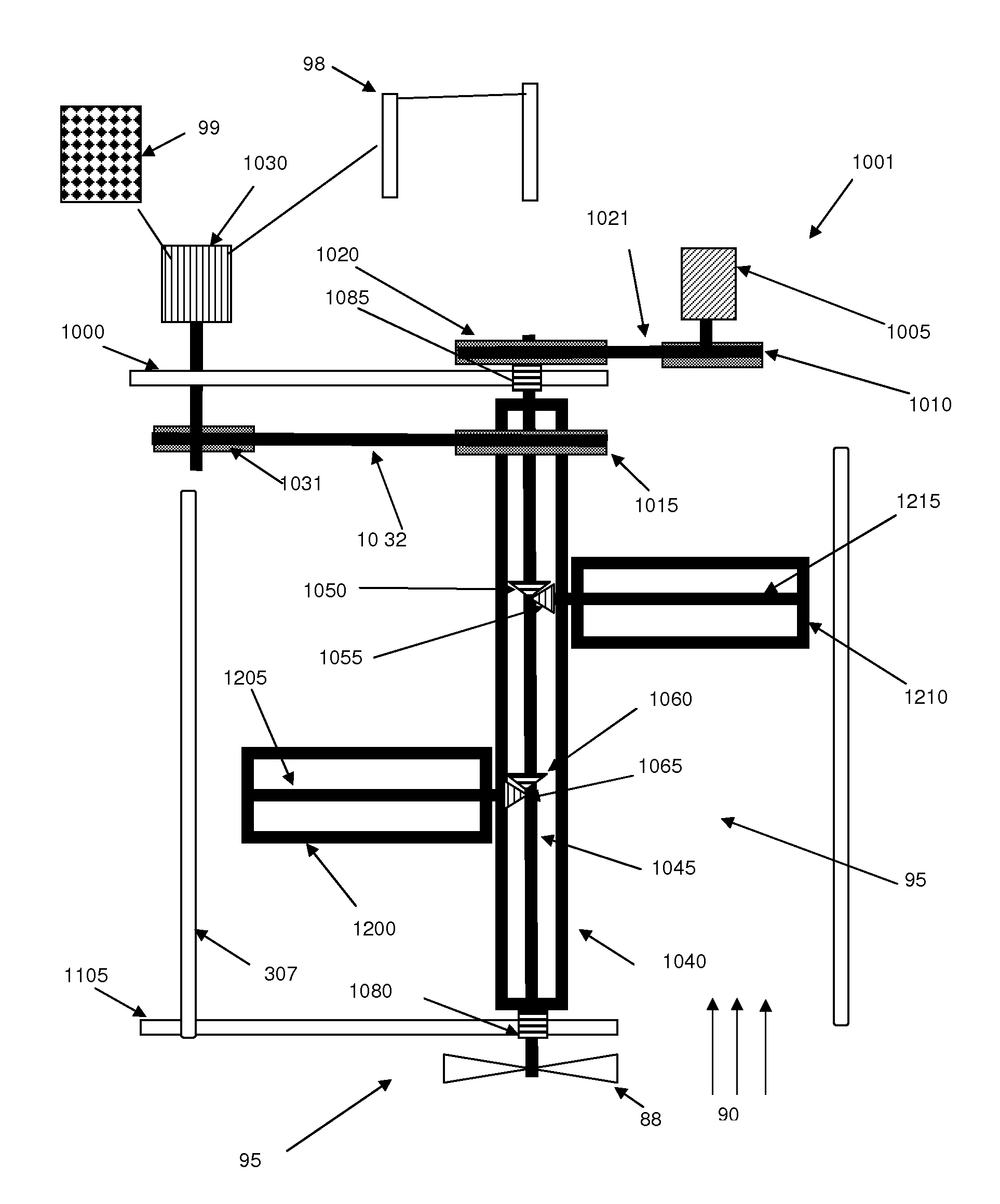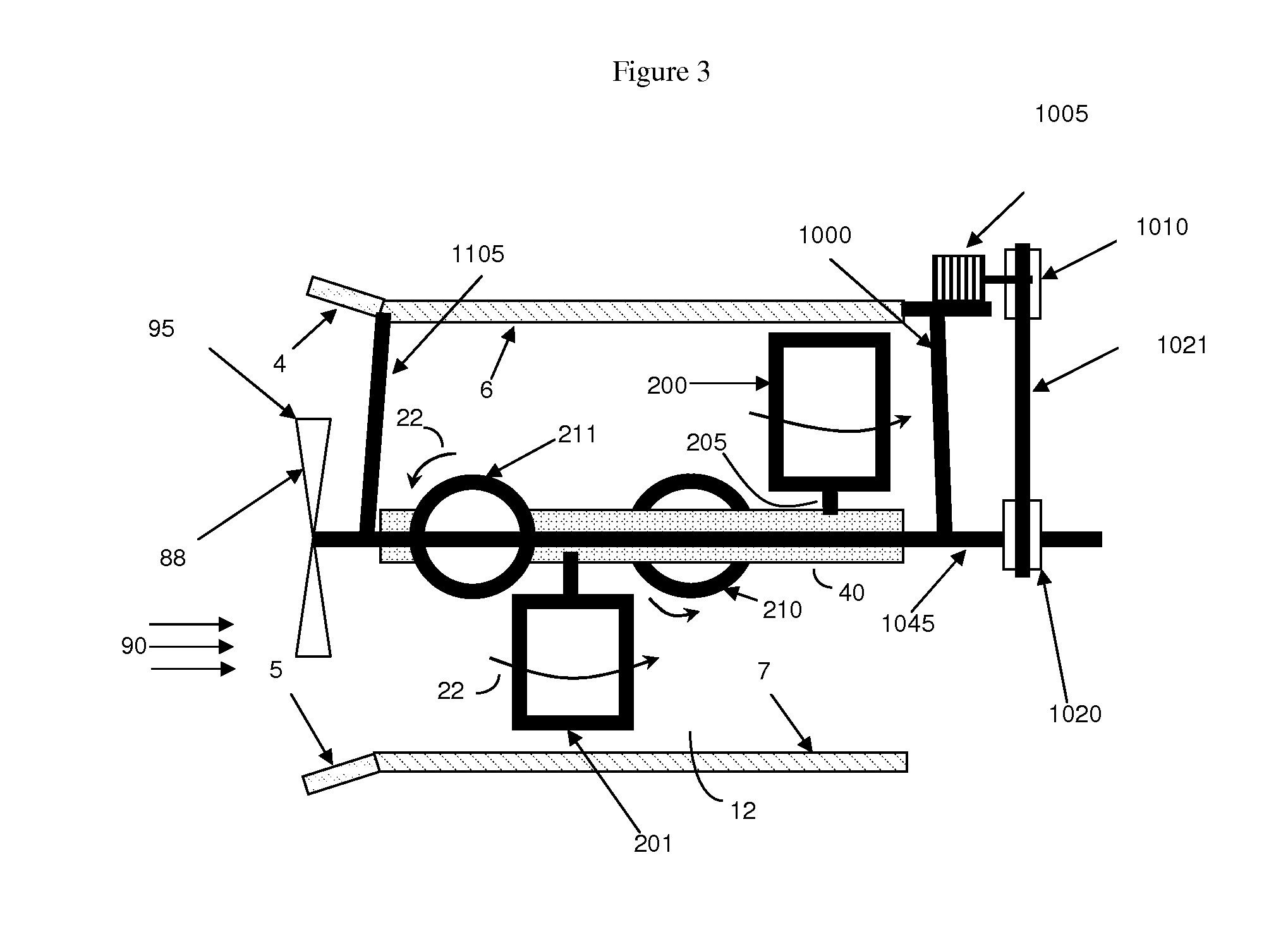Rotary magnus energy harvester
a rotary magnus and energy harvester technology, applied in the direction of electric generator control, renewable energy generation, greenhouse gas reduction, etc., can solve the problems of reducing the overall power generation efficiency of the system, savonius rotors are very inefficient, and cannot rotate faster than the wind speed, so as to increase the torque created by the lift, increase the torque, and increase the effect of torqu
- Summary
- Abstract
- Description
- Claims
- Application Information
AI Technical Summary
Benefits of technology
Problems solved by technology
Method used
Image
Examples
Embodiment Construction
[0049]As used herein, the term “hydro application” and “hydraulic” are used to describe the use of the energy harvesting device with regard to liquid, and the term “gas application” and “pneumatic” are used to describe the use of the energy harvesting device with regard to gas (e.g., air).
[0050]As used herein, the term “lift” refers to a force that is perpendicular to a direction of fluid flow.
[0051]As used herein, the term “electrical grid” refers to any system used to utilize or transport electrical current.
[0052]The invention is based, in part, upon the realization that higher efficiency Magnus force based energy harvesters can be produced by devising methods to better harness the force of the moving fluid to rotate the Magnus cylinder components of the energy harvesters at higher speeds.
[0053]Based upon this insight, the invention then defines the problem to be solved is to devise specific methods to increase the power generation of the Magnus device by utilizing the motion of t...
PUM
 Login to View More
Login to View More Abstract
Description
Claims
Application Information
 Login to View More
Login to View More - R&D
- Intellectual Property
- Life Sciences
- Materials
- Tech Scout
- Unparalleled Data Quality
- Higher Quality Content
- 60% Fewer Hallucinations
Browse by: Latest US Patents, China's latest patents, Technical Efficacy Thesaurus, Application Domain, Technology Topic, Popular Technical Reports.
© 2025 PatSnap. All rights reserved.Legal|Privacy policy|Modern Slavery Act Transparency Statement|Sitemap|About US| Contact US: help@patsnap.com



